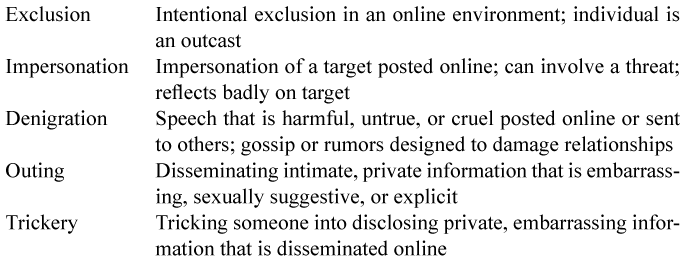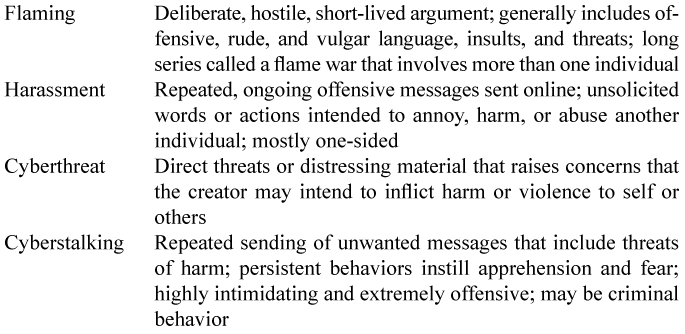Published in partnership with the
American Association of School Administrators
Published by Rowman & Littlefield
A wholly owned subsidiary of The Rowman & Littlefield Publishing Group, Inc.
4501 Forbes Boulevard, Suite 200, Lanham, Maryland 20706
www.rowman.com
16 Carlisle Street, London W1D 3BT, United Kingdom
Copyright 2014 by Merle Horowitz and Dorothy M. Bollinger
All rights reserved. No part of this book may be reproduced in any form or by any electronic or mechanical means, including information storage and retrieval systems, without written permission from the publisher, except by a reviewer who may quote passages in a review.
British Library Cataloguing in Publication Information Available
Library of Congress Cataloging-in-Publication Data
Horowitz, Merle, 1952
Cyberbullying in social media within educational institutions : featuring
student, employee, and parent information / Merle Horowitz and
Dorothy M. Bollinger.
pages cm
Published in partnership with the American Association of School Administrators.
Includes bibliographical references.
ISBN 978-1-4758-0009-8 (cloth : alk. paper) ISBN 978-1-4758-0011-1
(electronic)
1. Bullying in schoolsPrevention. 2. CyberbullyingPrevention.
I. Bollinger, Dorothy M. II. American Association of School Administrators,
issuing body. III. Title.
LB3013.3.H67 2014
371.7'82dc23
2014014166
 The paper used in this publication meets the minimum requirements of American National Standard for Information SciencesPermanence of Paper for Printed Library Materials, ANSI/NISO Z39.48-1992.
The paper used in this publication meets the minimum requirements of American National Standard for Information SciencesPermanence of Paper for Printed Library Materials, ANSI/NISO Z39.48-1992.
Printed in the United States of America
Cyberbullying in Social Media within Educational Institutions
The material presented in this book is prepared for informational purposes only and does not constitute legal advice. Although every reasonable effort has been made to ensure the accuracy and reliability of the information, the material is provided with no warranties of any kind. It is the readers responsibility to verify the accuracy and currency of information found in this book.
The authors assume no legal liability or responsibility for the accuracy, currency, completeness, or usefulness of any information provided in this book, or for any damages resulting, in whole or in part, from any readers use of or reliance on the material contained in this book, even if the authors have been specifically advised of the possibility of such damages.
Cyberbullying in Social Media: Students
C yberbullying differs from traditional bullying in that cyberbullying can attack anonymously, it can instantly go viral globally, it allows many people to harass the same target all at once, it hides and guards the cyberbully from the emotional toll his/her bullying creates, and it allows the culprit to push further than he or she might in a face-to-face relationship where the adverse effects are clearly perceived. Furthermore, many parents and employees of educational institutions do not have the technological know-how to monitor these actions.
EDUCATIONAL ASPECTS
Cyberbullying has become one of the major issues school districts must contend with today and one of this generations greatest social problems. As we look at cyberbullying in social media from the educational perspective, we not only need to know what it is but also need to examine the behaviors of cyberbullies against their victims, the emotional responses of victims to the cyberbullying, the peculiarity of cyberbullying in social media, and the impact of all of this on educational institutions.
Cyberbullying and social media are defined differently by educators and by state and federal law. This section, Educational Aspects, frames cyberbullying of students in social media from the educational research and education practice perspective. The next section of this chapter will address cyberbullying in social media from a legal perspective.
Educators Defining Cyberbullying and Social Media
A common general definition of cyberbullyingis willful and repeated harm, inflicted through computers, cell phones, and other electronic devices (Hinduja & Patchin, 2011, 1). Shariff and Gouin (2005) explain that cyberbullying consists of covert, psychological bullying, conveyed through electronic mediums, such as cell phones, web-logs and websites and online chat rooms (3). They assert that cyberbullying is actually easier to accomplish than traditional bullying for the following reasons: increased accessibility, increased risk of exploiting others, anonymity, disinhibition, lack of supervision, its viral nature, and limitless victimization.
Social media, too, is defined in different ways and has different meanings for different people. As we examine social media from an educational perspective, it includes Internet and mobile-based technologies that allow the creation and exchange of user-generated content. Social media involves communication and collaborative sharing (Marple Newtown School District, 2012). Social media differs from traditional media in that it is dynamic and is constantly being altered by users.
Examining the Behaviors of Cyberbullies against Their Victims
Cyberbullies are malicious aggressors (Hinduja & Patchin, 2006) who seek implicit or explicit pleasure or profit through the mistreatment of another individual. Cyberbullying also involves harmful behavior that may be of a repetitive nature. Due to the very nature of the behavior, cyberbullies have some perceived or actual power over their victims. Online power may simply stem from proficiency. Individuals who are able to navigate the electronic world and use technology in a way that allows them to harass others are in a position of power relative to a victim (Hinduja & Patchin, 2006). Many different terms have been used to refer to online behavior that is harmful, untrue, or cruel and may be considered a form of harassment.
As more individuals are using online communication in ways that are inappropriate and potentially criminal, researchers (Willard, 2006; Shariff & Gouin, 2005; Bocij, 2004; Ogilvie, 2000) have begun to define these types of cyberbullying behaviors. Nancy Willard (2006), from the Center for Safe and Responsible Internet Use, used the phrase online social crueltyto describe various forms of cyberbullying. Willards conceptual typology of these definitions in increasing order of seriousness follows:
These forms of online social cruelty are frequently exhibited during online communication in social media and may be considered a form of harassment.
The anonymous nature of transmissions and postings make it difficult to identify ones aggressors. It frees the bully of societal norms, morals, and conscience. Less courage is required to express hurtful thoughts. Disinhibition makes it more difficult to control impulsive behavior given a lack of clear consequences. A victims reaction is masked by technology. There is a lack of face-to-face emotion, as well as a loss of the feedback loop through body language. The viral nature of the Internet enables a rapid spread of information to large numbers of people in a very short period of time: texting takes seconds; posting photos on websites/email increases the audience dramatically from bathroom-stall comments. Content is spread from one person to another, making it impossible to control the rapid dissemination. Cyberbullying is not confined to the school day.
Next page

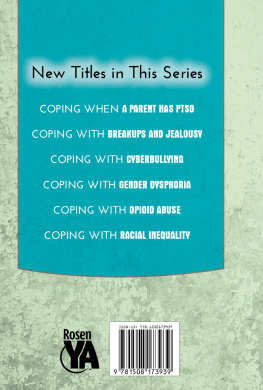
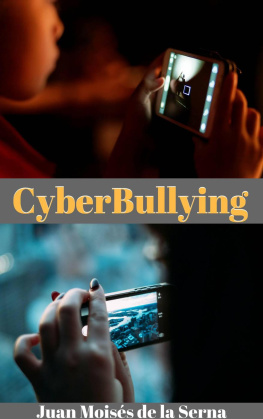

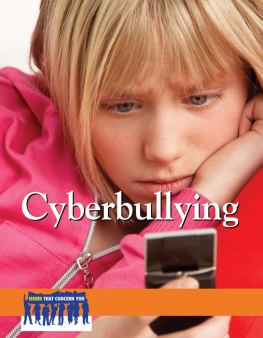
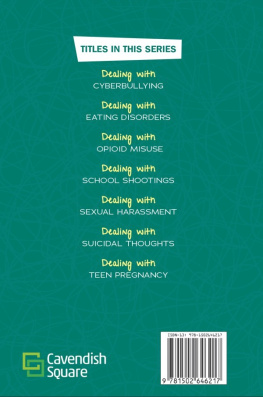
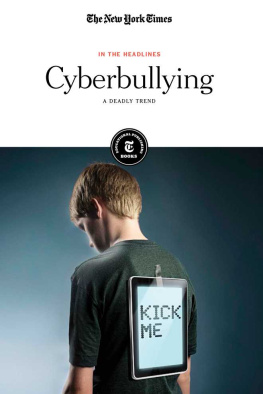
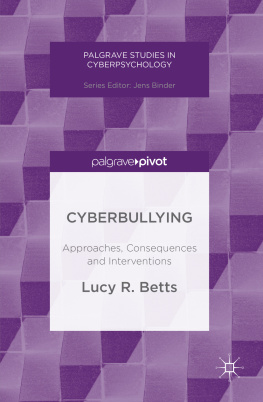
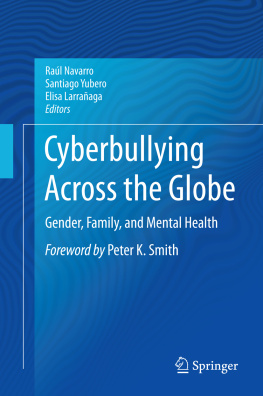
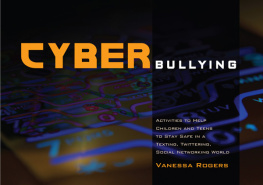
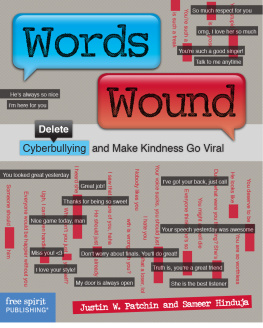
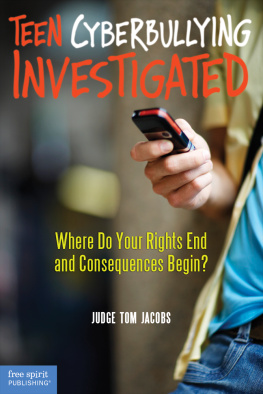
 The paper used in this publication meets the minimum requirements of American National Standard for Information SciencesPermanence of Paper for Printed Library Materials, ANSI/NISO Z39.48-1992.
The paper used in this publication meets the minimum requirements of American National Standard for Information SciencesPermanence of Paper for Printed Library Materials, ANSI/NISO Z39.48-1992.
